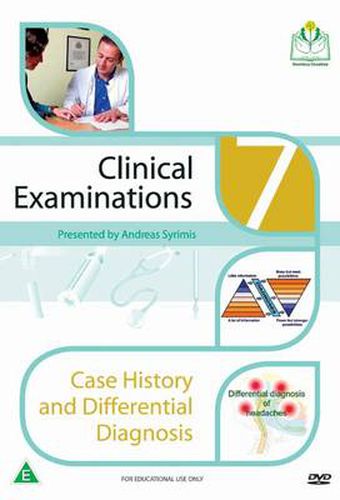Readings Newsletter
Become a Readings Member to make your shopping experience even easier.
Sign in or sign up for free!
You’re not far away from qualifying for FREE standard shipping within Australia
You’ve qualified for FREE standard shipping within Australia
The cart is loading…






Physical examination and clinical diagnosis is the next step after the core subjects of Anatomy, Physiology, Pathology and Differential Diagnosis. Acquiring effective and safe clinical skills is perhaps the most important stage in the clinician’s progression from theory to application. This unique ground-breaking presentation harnesses the use of technology to develop a visual tool that stimulates and enhances learning. Case History taking forms the first major component in the process of arriving at a diagnosis. Taking a concise and focused case history requires good listening, interpersonal and analytical skills. In most cases the clinician would have developed their differential diagnosis on case history alone. Subsequent clinical examination and further diagnostic procedures must be based on the identification of emerging themes that will eventually give rise to the most probable diagnosis(es). The process of focused case history inquiry and the development of differential diagnosis is demonstrated in a unique and innovative approach by analyzing the progress of real clinical encounters.
$9.00 standard shipping within Australia
FREE standard shipping within Australia for orders over $100.00
Express & International shipping calculated at checkout
Stock availability can be subject to change without notice. We recommend calling the shop or contacting our online team to check availability of low stock items. Please see our Shopping Online page for more details.
Physical examination and clinical diagnosis is the next step after the core subjects of Anatomy, Physiology, Pathology and Differential Diagnosis. Acquiring effective and safe clinical skills is perhaps the most important stage in the clinician’s progression from theory to application. This unique ground-breaking presentation harnesses the use of technology to develop a visual tool that stimulates and enhances learning. Case History taking forms the first major component in the process of arriving at a diagnosis. Taking a concise and focused case history requires good listening, interpersonal and analytical skills. In most cases the clinician would have developed their differential diagnosis on case history alone. Subsequent clinical examination and further diagnostic procedures must be based on the identification of emerging themes that will eventually give rise to the most probable diagnosis(es). The process of focused case history inquiry and the development of differential diagnosis is demonstrated in a unique and innovative approach by analyzing the progress of real clinical encounters.